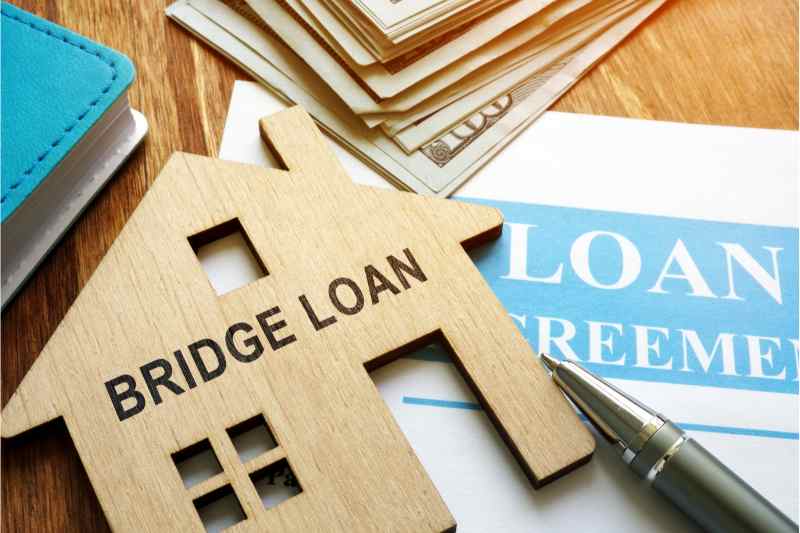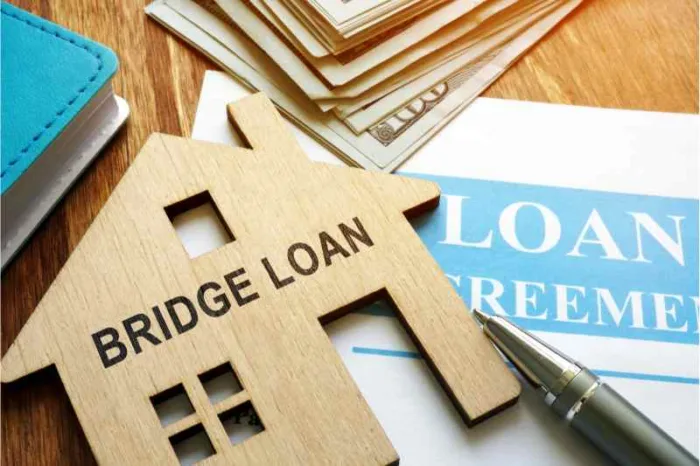Key takeaways
- Commercial bridge loans in real estate are high-interest short-term loans meant to cover a gap in financing during a large real estate purchase or project.
- Commercial bridge loans are offered by direct lenders, banks, and online lenders.
- Bridge loans for commercial real estate are calculated using the loan-to-value ratio.
- Benefits of bridge loans include fast financing and the ability to make strategic investments.
- Conversely, cons include high-interest rates and higher requirements to get approved.

Disclaimer: This content is for informational purposes only, you should not construe any such information as legal, tax, investment, financial, or other advice. Nothing contained on our site constitutes a solicitation, recommendation, endorsement, or offer by ButterflyMX or any third-party service provider. ButterflyMX is not a financial adviser. You should always seek independent legal, financial, taxation, or other advice from a licensed professional.
Commercial real estate financing always involves incredibly large sums of money. This can be overwhelming for even the most affluent investor. Thankfully, there are many funding options available to close your deal. Bridge loans for commercial real estate are one such financing option that can relieve the stress of commercial property investments.
In this post, you’ll learn what a commercial bridge loan in real estate is. Next, we’ll review who offers bridge loans. Finally, discover the benefits and drawbacks of bridge loans.
This post covers:
- What are commercial bridging loans?
- Who offers bridge loans?
- How are commercial bridge loans calculated?
- What are the benefits of bridge loans for commercial real estate?
- What are the cons of a bridge loan?
What are commercial bridging loans?
Bridge loans in commercial real estate are short-term commercial real estate loans that come at a high-interest rate. They are commonly used to quickly secure funding for a new investment or renovations before acquiring more long-term financing.
For example, say you currently own a property that will net you $1.2 million once you sell it. The next property you wish to acquire is $1 million. Once approved for a commercial bridging loan, you’ll receive the sum needed for the next property at a high-interest rate. Then, when your previous property eventually sells, the profits can then be used to pay off the remainder of your commercial bridge loan.
Another example of a commercial bridge loan is when you purchase a commercial building that doesn’t currently have tenants. As a result, you can use the large sum of money that comes with a bridge loan to put a down payment on the property and complete any renovations it may require. Then, after you find tenants for the property, you can use your positive cash flow to pay off the bridge loan.
Do bridge loans require collateral?
Bridge loans for commercial real estate almost always use collateral. However, this isn’t necessarily a requirement.
Collateral can include current properties or homes that you may own. Further, other asset classes of significant monetary value, such as land and vehicles, can also meet the criteria for collateral.

Who offers bridge loans?
Bridge loans are offered by most financial institutions.
The best commercial bridge loan lenders include:
- Commercial bridge loan direct lenders. These include private companies that use their own money to finance your loan. Approval requirements are often more flexible with direct lenders, but interest rates are higher.
- Online lenders. While online lenders provide financing quickly, they do have higher interest rates.
- Banks/credit unions. As the tried and true lenders, banks and credit unions offer great rates. However, they often have hefty requirements in order to get approved.
Regardless of the lender, they’ll calculate the real estate metrics of your investment before agreeing to work with you.
Learn how to invest in multifamily real estate:
How are commercial bridge loans calculated?
A commercial bridge loan calculator uses the LTV (loan-to-value) ratio to calculate what you’ll be approved for. So, LTV is found by dividing the total amount of the loan by the amount of the collateral that you are offering.
For example, you purchase a new property valued at $350,000. The commercial bridge loan direct lender you choose to work with calculates the real estate risk and offers you $300,000. This covers 85% of your purchase; you’ll be responsible for covering the remaining 15%.
What are the benefits of bridge loans for commercial real estate?
The benefits of bridge loans for commercial real estate are:
- They offer large sums of cash. The average price per square foot in a commercial building, such as an office building, is up to $35 per square foot. As you can see, this quickly adds up to an expensive property. Fortunately, bridge loans solve this dilemma.
- They can be used flexibly. As we’ve mentioned, commercial bridge loans have multiple use cases. So, they can be a strategic financial method in real estate investing.
- Speed. Bridge loans are often approved faster than other loans.
- Interest-only payments. Most bridge loans only require you to pay interest; the rest of the sum of your loan can be paid off all at once. As a result, this is especially useful if you’re waiting to sell another property first.

What are the cons of a bridge loan?
There are a few cons you should be aware of when seeking out bridge loans for commercial real estate.
Cons include:
- High commercial bridge loan rates. You need to ensure that you can pay them off quickly before taking one on.
- You may need additional financing. Bridge loans are a temporary financing fix. So, you may still need to apply for additional financing for newer properties once your bridge loan is paid off.
- Approval requirements. Bridge loans typically require you to be an established real estate investor or for you to have significant financial capital.







